Long lines, huge demand greet the now sold out Huawei Mate 50 series
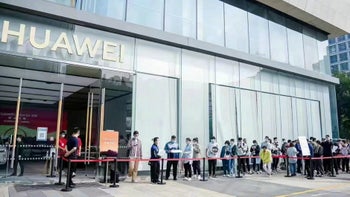
You might remember that when Huawei started accepting reservations for its 2022 flagship Mate 50 series, the company received over one million reservations. The phones were introduced on September 6th and included the Mate 50, Mate 50 Pro, Mate 50 RS Porsche Edition, and the entry-level Mate 50e. Sales started on September 21st and consumers in China gobbled them up.
Strong demand greets the release of the Huawei Mate 50 series
Long lines in China greeted the Mate 50 series at Huawei company stores and after selling out its first production run, Huawei consumer product chief Yu Chengdong (known by PhoneArena readers by his Americanized name of Richard Yu) said that the company would quickly speed up production to meet demand. Yu stated, "Yesterday, the Huawei Mate 50 series officially went on sale, and a large number of enthusiastic consumers went to Huawei stores across the country to purchase machines. Thank you very much for your love and support for the Mate 50 series! We will speed up production to ensure product supply so that more consumers can use the powerful Mate 50 series mobile phones."
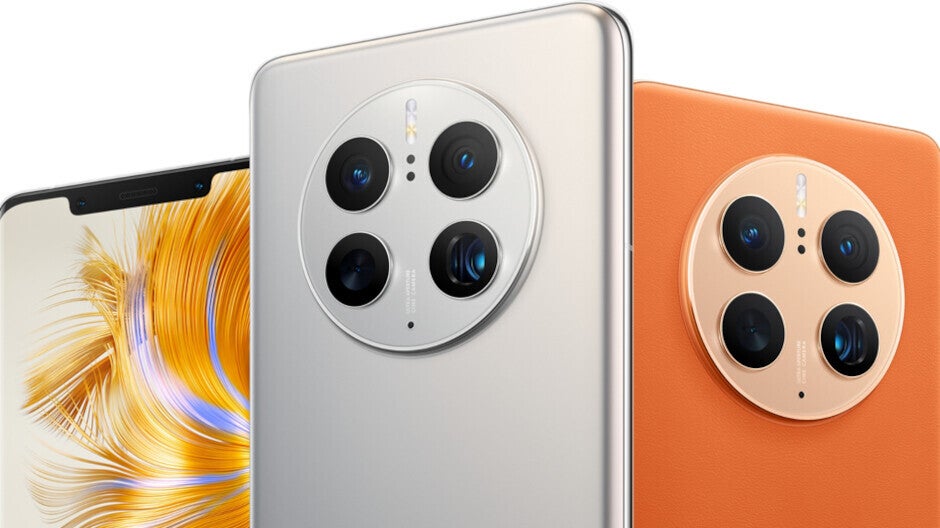
The Huawei Mate 50 Pro
Yu's Weibo page (via HuaweiCentral) was filled with photos of the long lines of consumers across the country who were so eager to purchase a Huawei Mate 50 series phone. Huawei used to produce two flagship series each year, the photography-focused (pun intended) P line early in the year followed by the feature-rich Mate series near the end of the year. But the U.S. restrictions against Huawei have limited its ability to source chipsets which has limited the firm to switch off between flagship models each year. For example, in 2023 Huawei will release the P60 series.
The chips used for three of the Mate 50 phones is the Snapdragon 8+ Gen 1 SoC. Now you might be asking yourself how Huawei can use the most cutting-edge of Qualcomm's Application Processors if it is blocked from doing so by the U.S. The answer is simple, these are tweaked to work only with 4G networks. The lower-priced Mate 50e has the Snapdragon 778G 4G under the hood.
Huawei reportedly is targeting sales of 10 million units for the Mate 50 line and it appears that this target will be met in just a few days. The company still has a long way to go to get back to its previous peak when it was the second largest smartphone manufacturer in the world. But the U.S., claiming that Huawei was a national security threat, placed the firm on the Entity List which prevents it from accessing its U.S. supply chain. That meant no more Google Mobile Services version of Android forcing the company to develop its own Harmony OS (with version 3.0 released with the Mate 50 line).
The next year (exactly one year to the day, suspicious timing really), the U.S. changed its export rules preventing foundries that use American technology to produce cutting-edge chips, to ship them to Huawei. The Chinese manufacturer at the time was TSMC's second-biggest customer after Apple. It tells you something about the demand for chipsets that TSMC could lose that business and continue to thrive.
The Mate 50 Pro and Mate 50 displays support one billion colors
The Huawei Mate 50 Pro is equipped with a 6.74-inch AMOLED display with a 1212 x 2616 resolution and a 19.5:9 aspect ratio. The display supports 1 billion colors and features a 120Hz refresh rate. The device sports 8GB of memory and 256GB or 512GB of UFS 3.1 storage.
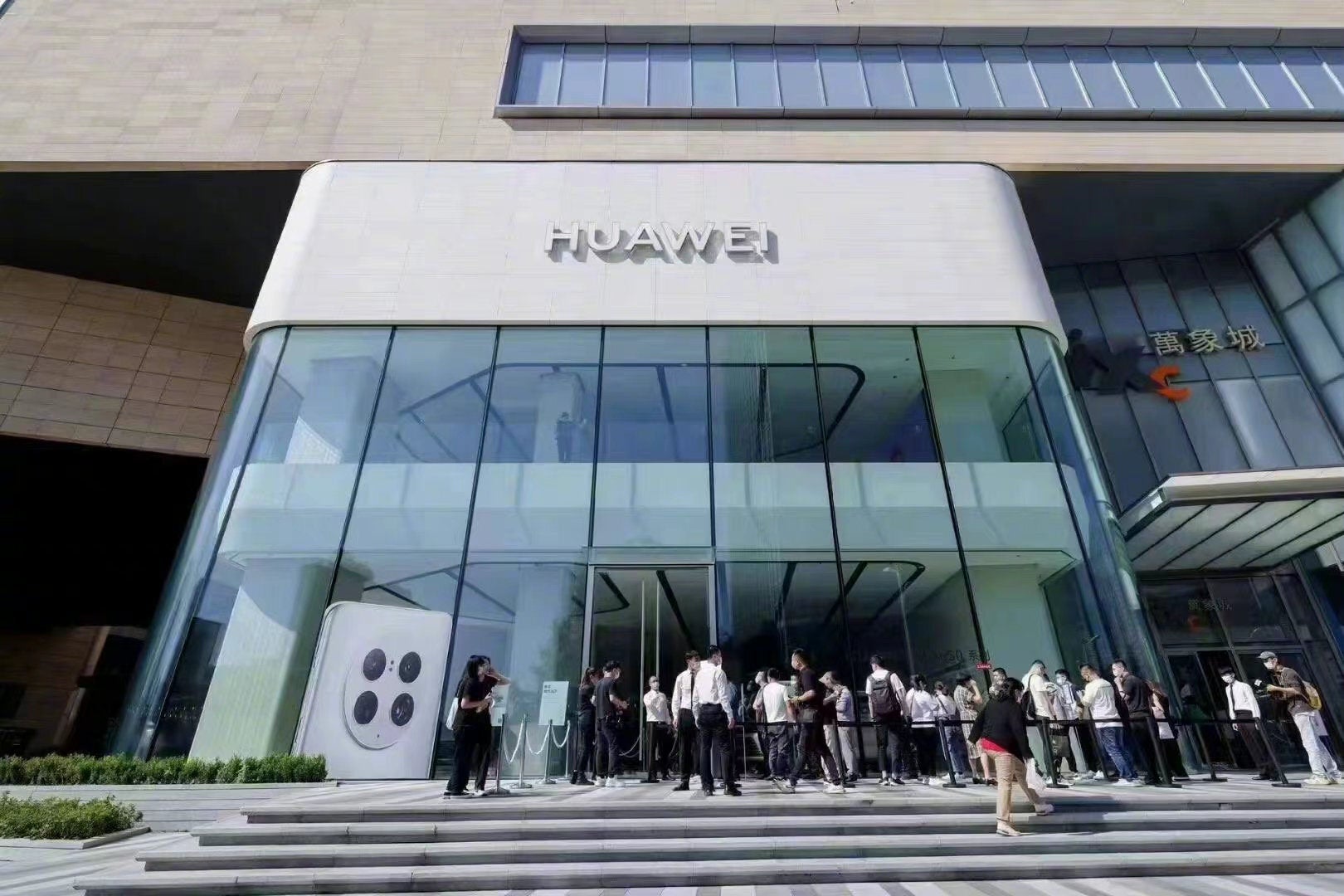
Long lines in China greet the Mate 50 series which sells out
On the back is a 50MP camera sensor with a variable aperture ranging from f/1.4-f/4.0. A 64MP periscope telephoto camera delivers 3.5x optical zoom, and a 13MP sensor drives the ultrawide camera. A 13 MP selfie snapper is in front along with a Time of Flight 3D camera for facial recognition. Oh, did we mention that the Mate 50 Pro carries an iPhone-like notch? A 4700mAh battery keeps the lights on and charges at 66W. It also offers 50W wireless charging and 5W reverse wireless charging.
The Mate 50 features a 6.7-inch AMOLED display with a 1224 x 2700 resolution and a 90Hz refresh rate. It comes with 8GB of memory and 128GB, 256GB, and 512GB of storage. It has the same 50MP camera sensor as the Mate 50 Pro with variable aperture. There is also a 12MP periscope telephoto camera with 5x optical zoom and a 13MP ultrawide camera. The 4460mAh capacity battery has the same charging speeds as the Mate 50 Pro.
If you're a phone enthusiast, it might warm the cockles of your heart to see strong demand for Huawei's latest flagship phones.







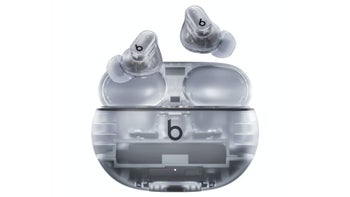
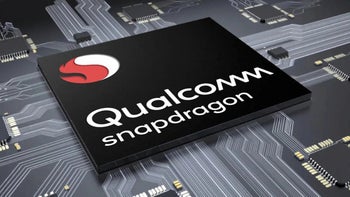


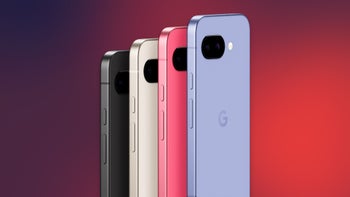
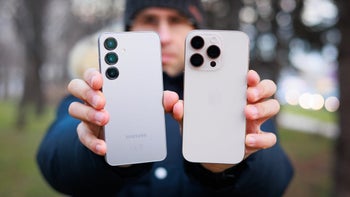
Things that are NOT allowed: